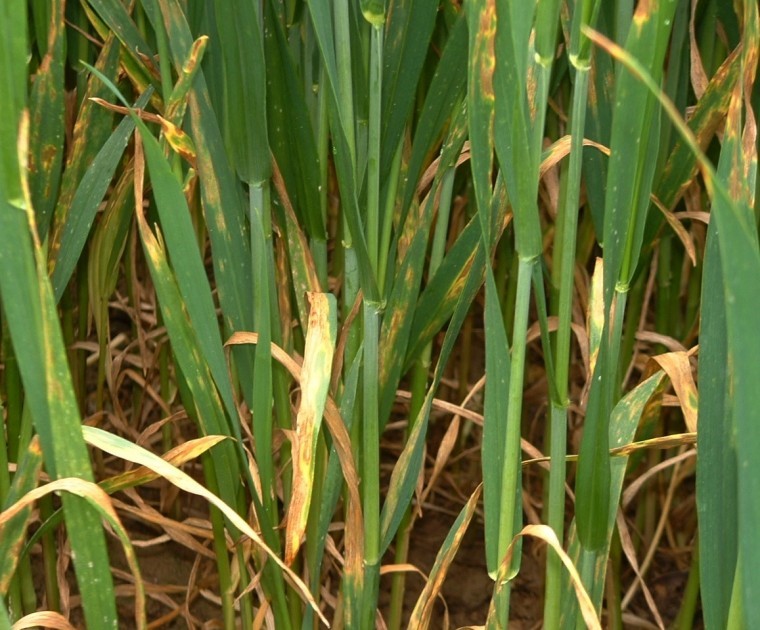SDHIs have become a cornerstone of many T1 and T2 programmes over recent years, but signs of declining performance against the principle threat of Septoria tritici last season reinforce the need for spray regimes that avoid exacerbating resistance problems and prolong existing chemistry.
Furthermore, the cold, wet winter and start to spring may have reduced early disease pressure, but cutting-back early sprays unnecessarily risks allowing disease to establish and could put later applied chemistry under extra pressure.
Cold weather only slows rust and Septoria development and both diseases can soon reignite with the right conditions, so it remains hard to predict what pressure crops will be under once they reach growth stage 32 (T1) and flag leaf emergence (T2), says Hutchinsons technical development director, Dr David Ellerton.
“At the moment pressure from rusts and mildew is lower than last season, but there’s a long way to go.”
The decline in curative control from triazoles, and signs of similar issues starting to affect SDHIs puts greater emphasis on early sprays to protect crops throughout the growing season and maximise yield potential, without ending up “firefighting” disease, he says.
Indeed, Hutchinsons-sponsored trials show average yield response from fungicides has exceeded 2.5t/ha in the past two years, with the most responsive varieties showing almost a 5t/ha benefit in 2016/17, despite a very dry spring leading to lower initial disease pressure.
{in-brief}
When to use an SDHI?
SDHIs still offer the strongest curative action against Septoria, so should remain the foundation of the all-important flag leaf spray, Dr Ellerton says.
The situation is less clear-cut at T1, where product choice should be tailored to variety resistance and other risk factors such as drilling date.
“If you’re growing a high risk variety sown early and spring weather is conducive to disease development you’re more likely to benefit from using an SDHI-based programme at both T1 and T2. However, growers should consider only using one at T2 where early disease pressure is lower.
“The key to optimising cost per tonne of production is to tailor fungicide programmes to risk on a field-by-field basis.”
To manage resistance pressure, Dr Ellerton says SDHI chemistry should always be mixed with a triazole and multisite protectant at any timing.
Chlorothalonil is the most consistent multisite on Septoria, although folpet and mancozeb are good alternatives, he notes.
Folpet is more effective on rusts than CTL and has also been found to have less impact on curative performance of partner products than some CTL mixes.
A mildewicide, such as cyflufenamid or fenpropimorph, is also worth including if mildew is found at T1.
Consider early strob
Strobilurins are another option at earlier spray timings, which can reduce reliance on SDHI or triazole chemistry, Dr Ellerton says.
Although they lack the curative efficacy of SDHIs against Septoria, azoxystrobin, fluoxastrobin or pyraclostrobin are strong against rusts and can boost root development and nutrient scavenging when applied earlier in the season (T0 or T1). Products based on azoxystrobin or fluoxastrobin can also help reduce take-all.
Where SDHIs have been used at T1 and T2, he says there may be scope to include a strobilurin at T3 to help prolong green leaf area.
Pictured: Septoria on lower leaves




